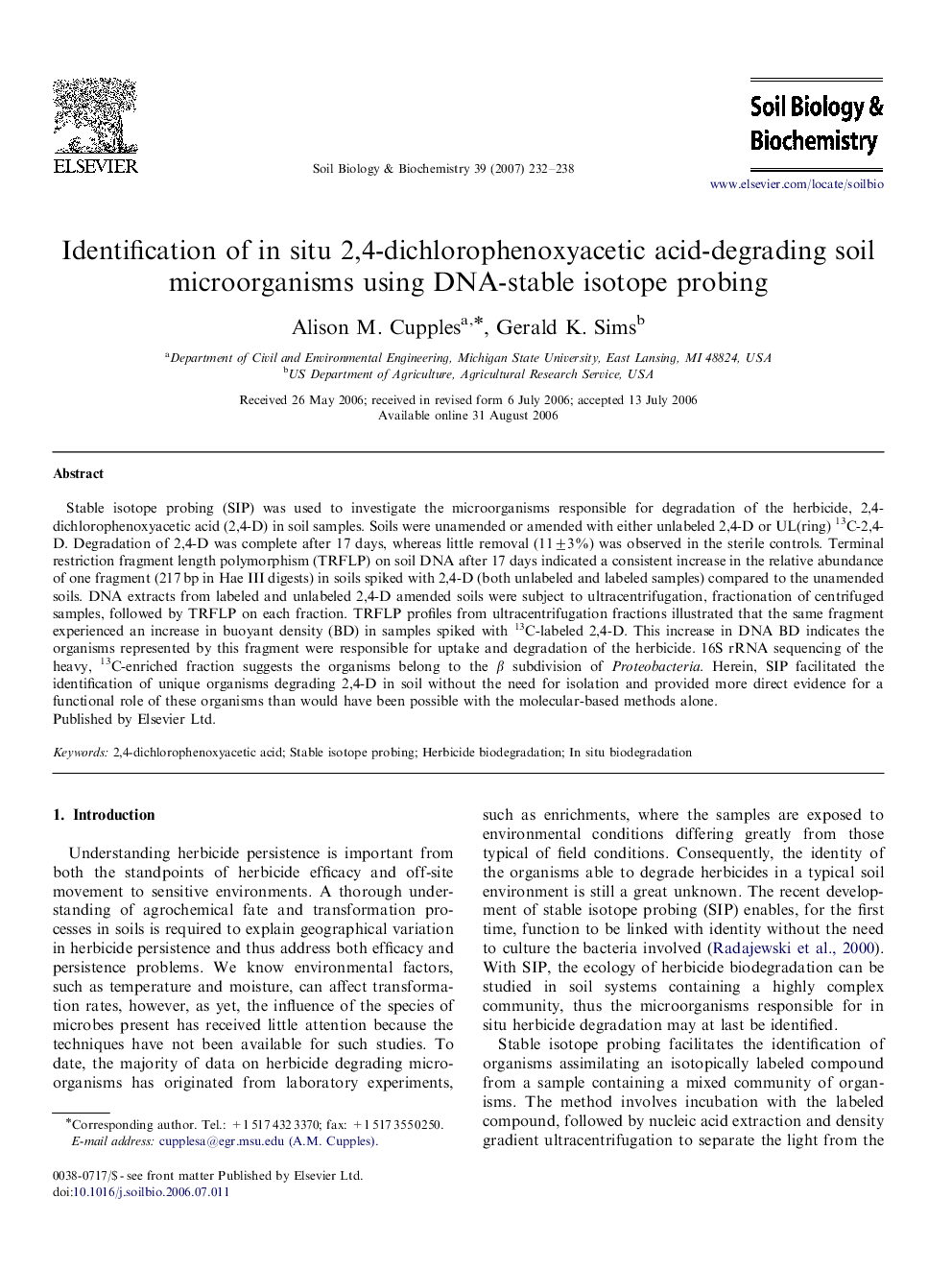| Article ID | Journal | Published Year | Pages | File Type |
|---|---|---|---|---|
| 2025883 | Soil Biology and Biochemistry | 2007 | 7 Pages |
Abstract
Stable isotope probing (SIP) was used to investigate the microorganisms responsible for degradation of the herbicide, 2,4-dichlorophenoxyacetic acid (2,4-D) in soil samples. Soils were unamended or amended with either unlabeled 2,4-D or UL(ring) 13C-2,4-D. Degradation of 2,4-D was complete after 17 days, whereas little removal (11±3%) was observed in the sterile controls. Terminal restriction fragment length polymorphism (TRFLP) on soil DNA after 17 days indicated a consistent increase in the relative abundance of one fragment (217 bp in Hae III digests) in soils spiked with 2,4-D (both unlabeled and labeled samples) compared to the unamended soils. DNA extracts from labeled and unlabeled 2,4-D amended soils were subject to ultracentrifugation, fractionation of centrifuged samples, followed by TRFLP on each fraction. TRFLP profiles from ultracentrifugation fractions illustrated that the same fragment experienced an increase in buoyant density (BD) in samples spiked with 13C-labeled 2,4-D. This increase in DNA BD indicates the organisms represented by this fragment were responsible for uptake and degradation of the herbicide. 16S rRNA sequencing of the heavy, 13C-enriched fraction suggests the organisms belong to the β subdivision of Proteobacteria. Herein, SIP facilitated the identification of unique organisms degrading 2,4-D in soil without the need for isolation and provided more direct evidence for a functional role of these organisms than would have been possible with the molecular-based methods alone.
Related Topics
Life Sciences
Agricultural and Biological Sciences
Soil Science
Authors
Alison M. Cupples, Gerald K. Sims,
